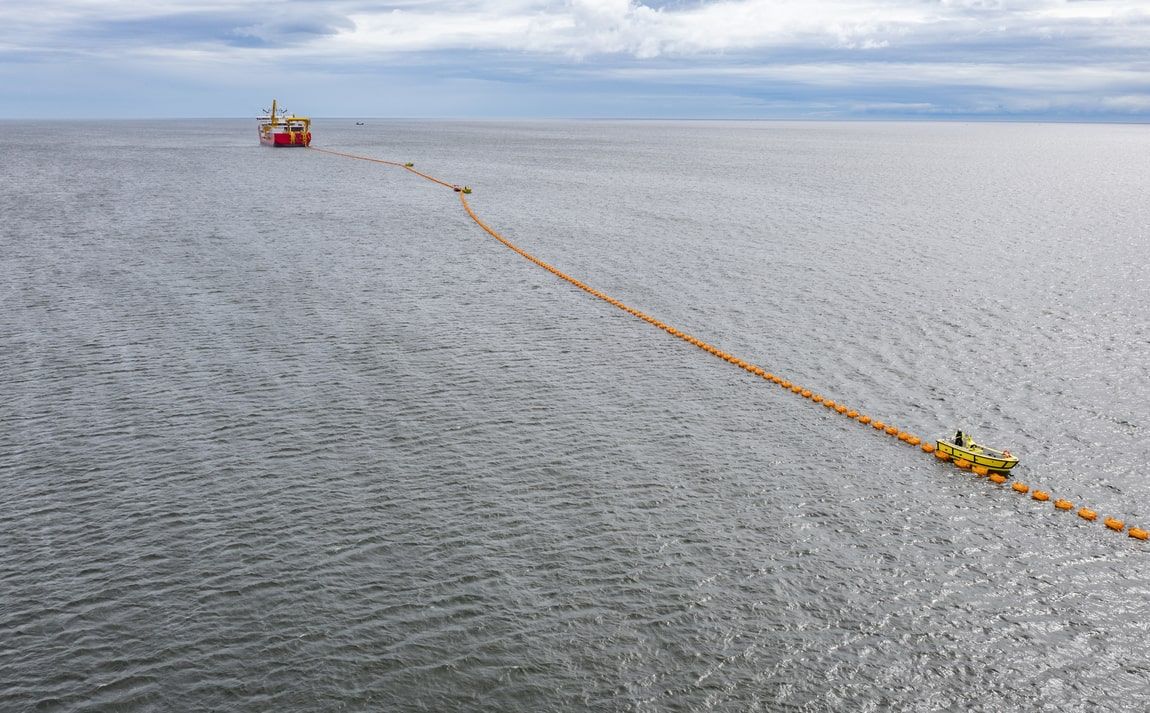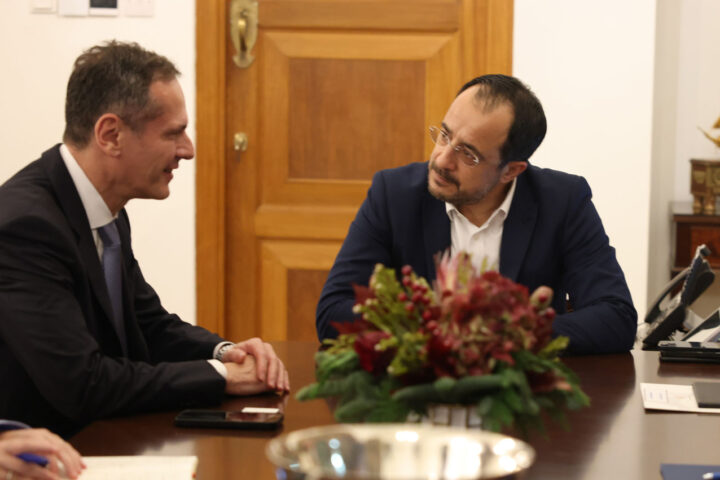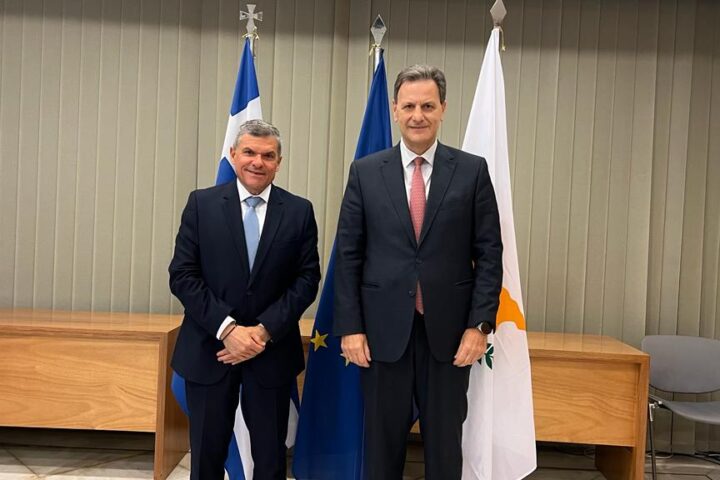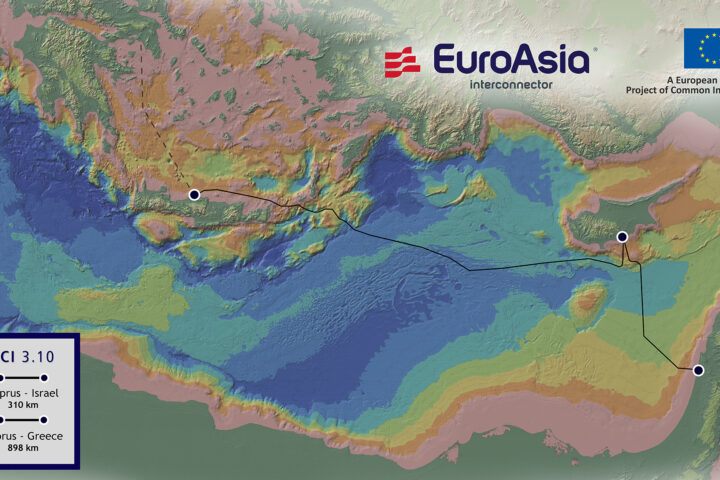Shares in French cable and fibre optic giant Nexans soared 5% Wednesday after announcing a record €1.43 bln contract to build the world’s longest and deepest subsea electricity link between Cyprus and Greece.
The Euronext-listed stock rose from Tuesday’s close of €77.32 to open at €80.72 and continued on its rising path to €81.67 by noon.
The EU-funded EuroAsia Interconnector will deliver up to 1,000MW and 2,000MW of electricity in two stages.
It is a ‘project of common interest’ as it connects the national electricity grids of Israel, Cyprus and Greece with continental Europe.
At 1,208km, EuroAsia is the longest HVDC interconnector in the world and the deepest as it will be laid on the Mediterranean seabed at nearly 3,000m, a first for any cable manufacturer.
Securing the largest financing of €658 mln for any infrastructure from the EU’s ‘Connecting Europe Facility’, that funds primarily electricity, natgas and energy projects, the EuroAsia ends the energy isolation of Cyprus.
It ensures the security of supply for Israel, Cyprus and Greece and creates a reliable green interconnector for Europe.
The project has also secured €100 mln from the Recovery and Resilience Fund (RRF) and is ready to clinch major funding from the European Investment Bank.
It will soon get a cash injection from Greece’s IPTO transmission system operator in exchange for a 25% stake in the company.
“After 12 years of hard work, the world’s longest and deepest subsea HVDC electricity interconnector will put Cyprus on the world energy map while also ending the energy isolation of Cyprus, the last non-interconnected EU member state, and Israel,” said Nasos Ktorides, CEO of EuroAsia Interconnector.
The project was conceived the day after a munitions explosion at Mari naval base on July 11, 2011, decimated the nearby Vassiliko power station and left Cyprus in total darkness and with rolling power cuts for weeks.
The Cyprus economy lost billions in that explosion and resorted to renting mobile power generators supplied by Greece’s Public Power Company and EuroAsia’s parent.
After signing the deal with Nexans, Ktorides said the interconnector significantly reduces the CO2 emissions and serves the Green Deal of the European Commission.
Push the limits
“This record-breaking project demonstrates our capacity to innovate and push the limits of electrical transmission and distribution to meet an ever-growing global need.
“This is a crucial step on the path to a carbon-free economy,” said Nexans CEO Christopher Guérin
He said that Nexans’ global electrification strategy “is playing a key role in the world’s journey to a net zero future, and we are excited that we have been selected to bring the development of the EuroAsia Interconnector to life.”
Guérin said the 525kV high voltage direct current (HVDC) cable with a bi-pole length of 2×900 km would be manufactured in Nexans’ facilities in Halden, Norway, and Futtsu in Japan and installed by the state-of-the-art cable laying vessels Nexans Aurora and Nexans Skagerrak.
Pole One is expected to be completed in 2028, and Pole Two in 2029.
According to Reuters, analysts expect improvements in Nexans’ EBITDA (earnings before interest, tax, depreciation and amortisation) margins and free-cash-flow generation starting from the second half of 2023 due to the contract.
Nexans is the second-best performer on Paris’ SBF 120 index, which is up 0.64% itself.
The EuroAsia Interconnector deal is expected to feature prominently at Nexans’ next investor briefing on July 26, when it publishes its first-half 2023 earnings.
It is also a subject to be discussed by the three leaders of Cyprus, Greece and Israel when they meet in Nicosia on July 26 for their first trilateral summit.
Speaking after the cabinet meeting on Wednesday, Cyprus Energy Minister George Papanastasiou said the government is exploring all prospects to support the interconnector, as it is of “geostrategic importance.”
He said that one of the plans being considered is a state guarantee for future funding from the EIB, as the project is faced with higher raw materials costs from initial budgets, which have now risen to nearly €1.9 bln for the Cyprus-Greece section.
Beyond the cable, EuroAsia Interconnector has selected Siemens Energy to build the HVDC converter stations near Kofinou in Cyprus, and in Crete, from where it will interconnect with the IPTO grid in Greece by way of another subsea link from Crete to Attica.










